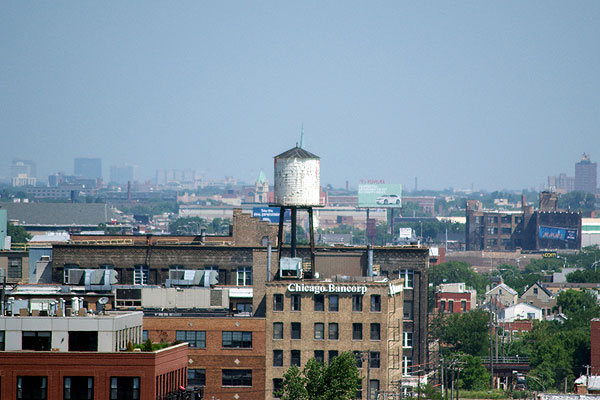
Mayor Emanuel wants to double water rates over five years. Predictably, residents are unhappy, aldermen less so. I'd be unhappy too (and will be, assuming it increases my rent), since it's a big increase in a very short time.
On the other hand, the mayor's noted that Chicago's water rates are very low. And he's got a point, as was noted in a lengthy series in the Sun-Times about broader problems with the city's water system (you can start here; other stories are conveniently in a sidebar). More accurately, they were very low, and have been increasing a lot in the past couple years.
Water was $15 per 1,000 cubic feet or $2.01 per 1,000 gallons in 2010 (1 cubic foot = about 7.5 gallons), for metered buildings—unmetered buildings are another ball of wax, which the Sun-Times series is a good start towards understanding. That represents a 14 percent increase over 2019. Which was a 15 percent increase over 2008. Which was a 15 percent increase over 2007.
Those 2007 prices were a… zero percent increase over 2006. From 2002-2007, water increased four, then four, then three, then three, then zero percent for two years. Here are the numbers.
Meanwhile, New York's 2010 price for metered buildings was $26.10 per 1,000 cubic feet. From 2002 to 2012, the city's rates have increased from three percent to 14.5 percent each year. Minneapolis: $30.05 this year. Great Lakes peer Cleveland: comparable and also rising, but still higher. Atlanta and Seattle: spectacularly high. Madison: $2.81 per 1,000 gallons, which equals about $21 per 1,000 cubic feet. Detroit: $18.09 minimum, plus a monthly service charge starting at $4.81.
Historically speaking, Chicago water rates have risen higher than inflation. In 1970, water was $2.16 per 1,000 cubic feet, or $12.61 in 2011 dollars. In 1981, water was $5.32 per, or $13.26 today. But in the past two decades, the city has also substantially increased the rate of replacement for its aging water infrastructure, as Jessica Pupovac reported in 2010. That means replacing pipes like the one that broke on Montrose in 2008:
The break in the 1800 block of Montrose Avenue follows a similar disaster that occurred just six months ago at Cottage Grove Avenue and 67th Street and is unlikely to be the last of its kind. Several hundred burst each year. The water infrastructure of many of the city's outlying neighborhoods was built during a population boom from about 1880 to 1920 and is nearing the end of its life expectancy, said officials with the city's Department of Water Management.
Obsolete cast-iron pipes like the one that broke early Tuesday make up more than 20 percent of the city's 4,300 miles of water mains, officials said. They are slowly being replaced — this year about 40 miles will be redone — with pipes made of ductile iron, an alloy that is stronger and less susceptible to damage from sudden fluctuations in temperature.
At that rate—which is higher than it has been in the past—that's 21.5 years to replace 860 miles of water mains. Emanuel's plan would more than double that rate of replacement.
So is the water fee hike reasonable? Depends on what your metric is, I guess. If you look at it compared to rates and rate hikes in other cities, then the answer might be yes. If you look at it compared to recent years, the answer might be no, since it's difficult for people to plan around substantial increases in unavoidable necessities, particularly in a down economy.
Photograph: nathanmac87 (CC by 2.0)



